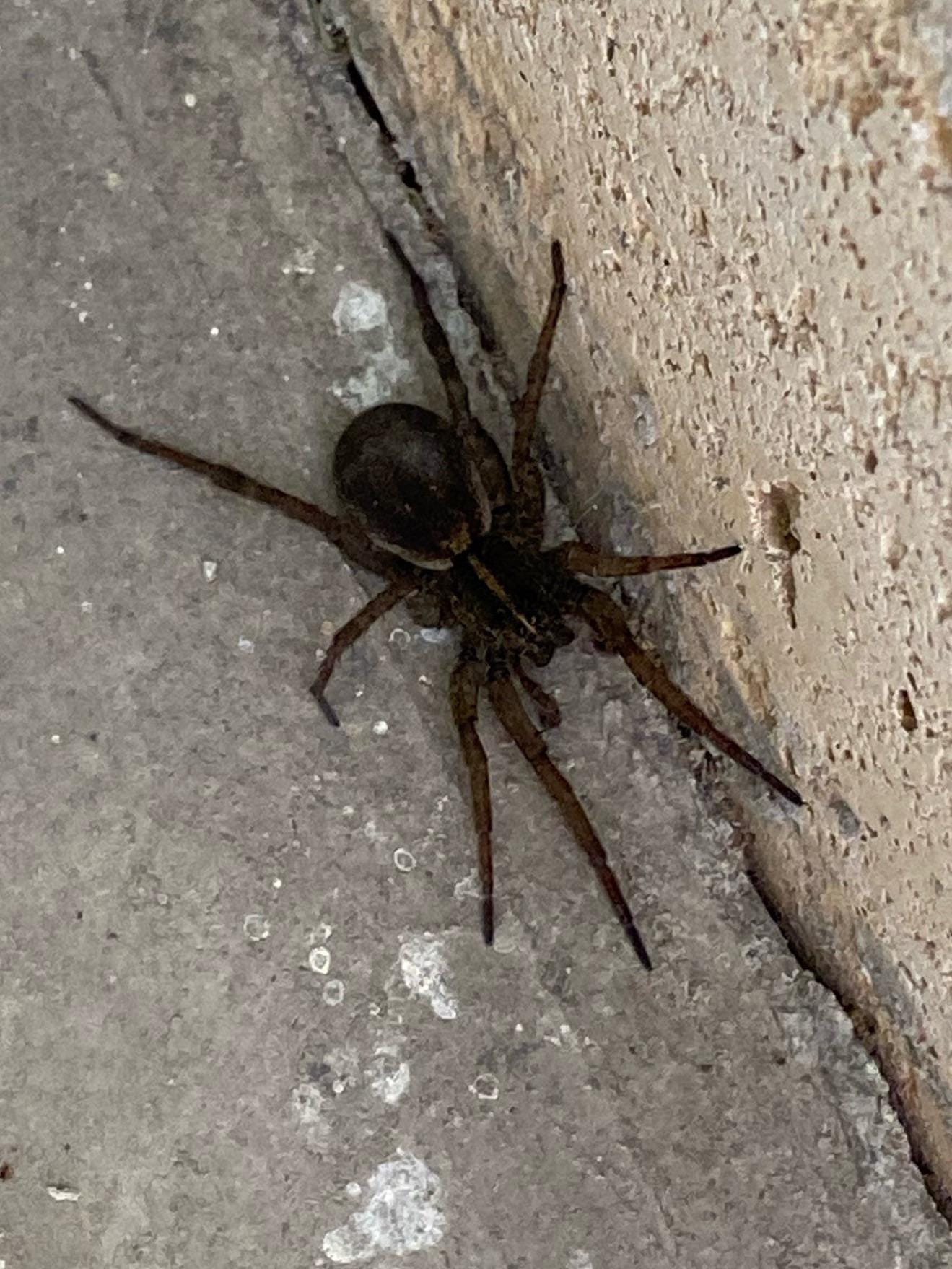Northeast Pennsylvania, with its rolling hills and abundant waterways, is home to a diverse range of spider species. While online resources often focus on a general list of Pennsylvania spiders, this guide delves into the specific species and ecological factors relevant to the northeastern region. From the familiar garden dwellers to the more elusive forest inhabitants, we’ll explore their unique characteristics, habitats, and the important roles they play in the ecosystem. Learn to identify common species, separate myth from fact, and discover how to coexist peacefully with these fascinating creatures.
Unveiling the Arachnids: Common Spiders of Northeast Pennsylvania
While hundreds of spider species likely call Northeast PA home, some are more commonly encountered than others. Here’s a closer look at a few you might encounter:
Black Widow (Latrodectus mactans)
- Description: Shiny black with a distinctive red hourglass marking on the underside of the abdomen. Females are larger, reaching about ½ inch in body length, while males are smaller and less strikingly colored.
- Habitat: Prefer undisturbed areas like woodpiles, sheds, basements, and hollow logs. They create messy, irregular webs.
- Web Type: Irregular web (image of a black widow web in a typical environment)
- Behavior: Primarily nocturnal and not aggressive. Bites typically occur when their web is disturbed, or they feel threatened.
- Venom/Bite Information: The black widow is one of the few medically significant spiders in Northeast Pennsylvania. Their venom is a neurotoxin, meaning it affects the nervous system. Symptoms of a bite can include intense pain, muscle cramps, sweating, nausea, and difficulty breathing. Seek immediate medical attention if bitten by a black widow.
Grass Spider (Agelenopsis spp.)
- Description: Brownish-gray with distinctive stripes on the cephalothorax (head region) and a light stripe running down the middle of the abdomen. Body length: ½ – ¾ inch.
- Habitat: Common in grassy areas, fields, and gardens. They build funnel-shaped webs with a silk retreat at the narrow end.
- Web Type: Funnel web (image of web)
- Behavior: Active hunters, primarily at night. They wait for prey to stumble into their web.
- Venom/Bite Information: They possess venom to subdue prey but are not considered a threat to humans. Bites are rare and typically cause only minor, localized reactions.
Jumping Spider (Salticidae family)
- Description: Compact bodies with short legs and often brightly colored or iridescent. Known for their large, forward-facing eyes, giving them excellent vision. Size varies greatly among species, but most are relatively small, typically less than ½ inch in body length.
- Habitat: Found in a variety of habitats, including gardens, forests, and even inside homes. They don’t build webs to capture prey.
- Web Type: Do not build webs for prey capture but use silk for shelter and egg sacs.
- Behavior: Active hunters during the day. They use their powerful legs to jump on their prey.
- Venom/Bite Information: They have venom to subdue prey but rarely bite humans. If bitten, symptoms are usually mild and localized.
Yellow Sac Spider (Cheiracanthium inclusum)
- Description: Pale yellow to greenish-yellow, sometimes with a darker stripe running down the abdomen. Slightly larger than a nickel, about ¼ to ⅜ inch in body length.
- Habitat: Often found indoors, particularly in corners, under furniture, and along walls. They build silken sacs or retreats where they hide during the day.
- Web Type: Sac spiders build small, silken sacs, not sticky webs. (Image of a sac spider retreat)
- Behavior: Primarily nocturnal hunters. They wander in search of prey and may accidentally encounter humans.
- Venom/Bite Information: Their venom can cause localized pain, redness, and swelling. Some people may experience more severe reactions, including itching, burning, and even skin lesions. Seek medical advice if symptoms are concerning.
Dark Fishing Spider (Dolomedes tenebrosus)
- Description: Large, with a leg span reaching up to 3 inches. Brownish-gray with a pale stripe down the middle of the cephalothorax and lighter bands on the legs.
- Habitat: Found near water sources, such as ponds, streams, and wetlands.
- Web Type: Do not build webs to capture prey. Females create a silken sac to protect their egg sac.
- Behavior: Active hunters, particularly at night. They can move quickly and even walk on water.
- Venom/Bite Information: While they have venom to subdue prey, Dark Fishing Spiders are not considered aggressive toward humans. Bites are rare and typically no worse than a bee sting.
Orb Weaver Spider (Araneidae family)
- Description: Diverse family with a wide range of colors, patterns, and sizes. Known for their intricate, circular webs.
- Habitat: Gardens, forests, meadows – anywhere they can find suitable anchor points for their webs.
- Web Type: Orb webs, often large and geometrically impressive. (Image of a classic orb web)
- Behavior: Many are nocturnal, waiting for prey to become trapped in their webs.
- Venom/Bite Information: They possess venom for subduing prey, but most orb weaver species in Northeast PA are not medically significant to humans. Bites are uncommon and usually result in only minor, localized reactions.
Where They Weave: Spider Habitats in Northeast Pennsylvania
Northeast PA’s diverse ecosystems provide a variety of habitats that support different spider populations.
Forests: The dense woodlands of the Pocono Mountains and other forested areas provide ideal habitats for a wide array of spider species. Look for orb weavers like the Arrowhead Spider (Verrucosa arenata) with its distinctive pointed abdomen, or the Marbled Orb Weaver (Araneus marmoreus), known for its variable color patterns. Wolf spiders are also common forest floor inhabitants.
Wetlands: Areas around ponds, lakes, and marshes provide a haven for moisture-loving spiders. The Dark Fishing Spider is a common sight, often seen hunting near the water’s edge. You might also encounter the Six-Spotted Fishing Spider (Dolomedes triton), easily recognizable by its distinct white spots.
Gardens and Fields: Gardens and meadows provide excellent hunting grounds for various spiders. The Yellow Garden Spider constructs its large, impressive orb webs in sunny locations. The Bold Jumper (Phidippus audax), known for its striking black and white markings, is a common sight, actively hunting its prey among flowers and foliage.
Urban Environments: Some spiders have adapted to life in urban areas, seeking shelter in homes, garages, and other buildings. The Common House Spider (Parasteatoda tepidariorum), with its tangled webs, is a frequent resident in basements and crawl spaces.
Separating Fact from Fiction: Spider Myths Debunked
Myth: All spiders are dangerous.
Fact: The vast majority of spiders in Northeast Pennsylvania, and worldwide, are harmless to humans. Their venom is primarily designed to subdue their insect prey. Only a small number of species have venom potent enough to cause medical concerns for humans.
Myth: Spiders love to crawl into beds.
Fact: This is a common misconception. Spiders are more likely to be found in undisturbed areas, away from human activity. The idea of them intentionally seeking out our beds is more a product of arachnophobia than reality.
Coexisting with Our Eight-Legged Neighbors
Spiders play a vital role in our ecosystem, acting as natural pest control agents. They help keep insect populations in check, which benefits gardens, crops, and overall ecological balance. Here are some tips for peaceful coexistence:
Respect Their Space: Observe spiders from a distance and avoid disturbing their webs. If you need to relocate a spider from your home, use a cup and a piece of paper to gently scoot it outside.
Prevent Unwanted Encounters: Seal cracks and gaps in your home’s foundation, around windows, and under doors to deter spiders from entering. Keep outdoor lights off at night, as these can attract insects and, in turn, spiders.
Choose Eco-Friendly Pest Control: Minimize the use of pesticides. These chemicals can harm beneficial spiders and disrupt the natural balance of your yard.
Understanding Northeast PA’s Arachnids
By learning about the common spider species of Northeast Pennsylvania, their habitats, and their ecological importance, we can move beyond fear and appreciate these fascinating creatures. While a few species require caution, the vast majority are harmless and play a vital role in our environment. Remember, knowledge and understanding are key to peaceful coexistence with the spiders that share our surroundings.
- Crypto Quotes’ Red Flags: Avoid Costly Mistakes - June 30, 2025
- Unlock Inspirational Crypto Quotes: Future Predictions - June 30, 2025
- Famous Bitcoin Quotes: A Deep Dive into Crypto’s History - June 30, 2025
















